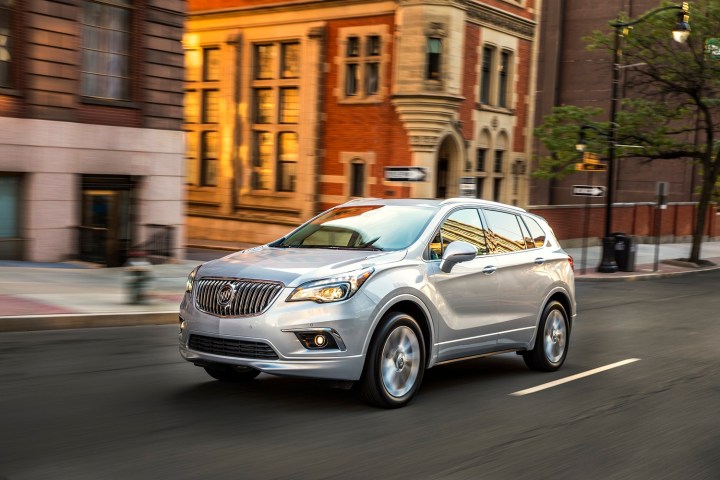
The Envision lineup is now broken down into five trim levels named Base, Preferred, Essence, Premium I, and Premium II. The first three trims are new additions to the lineup, while the top two carry on essentially unchanged.
The most important upgrade for the 2017 model year is the arrival of a 2.5-liter four-cylinder engine. The naturally aspirated, direct-injected four generates 197 horsepower at 6,300 rpm and 192 pound-feet of torque at 4,400 rpm. It comes standard on the bottom three trim levels.
The top two trims in the hierarchy continue to offer a turbocharged 2.0-liter four-cylinder engine. It’s tuned to provide 252 horsepower at 5,500 rpm and 260 pound-feet of torque at just 2,000 rpm. Fuel economy checks in at 20 mpg in the city and 26 mpg on the highway thanks in part to a standard start/stop system.
Both engines are bolted to a six-speed automatic transmission. The 2.5-liter ships with front-wheel drive, but Preferred and Essence models can be ordered with weather-beating all-wheel drive at an extra cost. The 2.0-liter is exclusively available with all-wheel drive.
2017 also brings Apple CarPlay and Android Auto compatibility. Additionally, the Envision receives a teen driver feature that lets parents keep track of how far their kids drive, how fast they go, how often they break the speed limit, and the number of times the miscellaneous driving aids (like the forward collision alert function) turn on. Parents can also use the teen driver feature to dial in a maximum speed.
Built in Yantai, China, the 2017 Buick Envision is scheduled to reach showrooms in the coming weeks. The three new trim levels help bring the Envision’s base price down from $42,995 to $34,990. Buyers in the market for an Envision can also look at the Acura RDX, the Lincoln MKC, the Lexus NX, and the Audi Q5.
Editors' Recommendations
- 2025 Buick Electra: rumored price, release date, range, and more
- Amazon sues 10,000 Facebook groups over fake reviews
- TCL’s ultra-slim X9 Google TV packs a soundbar, webcam, and a $10,000 price tag
- SpaceX’s Starlink internet service now has more than 10,000 users
- Tesla recalls nearly 10,000 Model X and Model Y vehicles



